Rhinoplasty changes the patient and is considered one of the most effective methods to change the appearance.
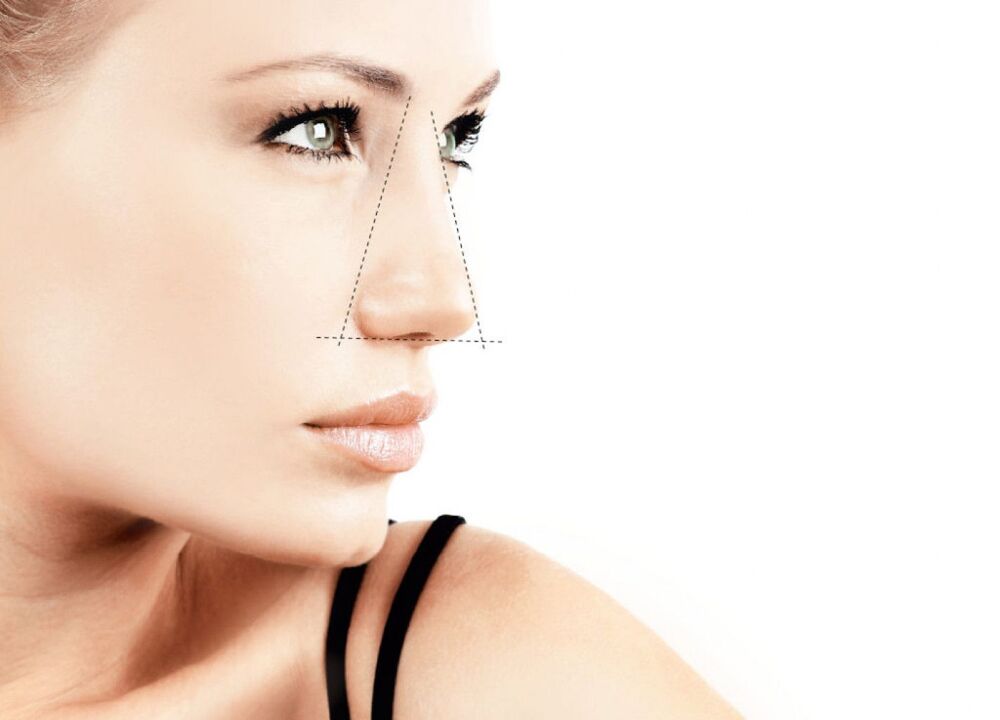
The face becomes open, looks younger, visible deformities are eliminated, and sometimes respiratory problems. Surgeons in our country have enough equipment and techniques to give someone a new look.
But every operation has its pros and cons.
Types of rhinoplasty
How is rhinoplasty different from rhinoplasty?There is no difference between these concepts.
There are several types of corrections.Here is how rhinoplasty is done with each type of surgery:
- Septoplasty: aims to change the shape of the nasal septum and is prescribed if respiratory function is impaired.
- Closed rhinoplasty goes like this: through one or more incisions, the skin is separated from the frame - cartilage, bone. Then they make corrections - parts are removed or upgraded. The skin is then sewn. Columella incisions were not performed. This is a common technique used by surgeons.
- Open rhinoplasty: indicated for a large amount of correction. Incisions are made in the nasal cavity and in the columnar area.
How long does rhinoplasty take: The duration of the operation depends on the amount of work and techniques. So,closed correction lasts 30-40 minutes, open - up to 60 minutes. For fully closed rhinoplastytake 1 hour, open - about 1. 5 hours.
Operation video
To explain how rhinoplasty is performed, we recommend watching a video of the operation.
Rhinoplasty without surgery
It had to be done if minor defects were to be eliminated.It is performed in 5-7% of patients.
Fillers are used to smooth or change the angle of the tip of the nose, restore symmetry, and close the hump. The disadvantage of such a correction is that after 12-18 months of soluble fillers, there is a risk of material migration.
Absorbable preparations are also used. Therefore, it is possible to get rid of bumps, bumps. This technique is used on the tip, wings, supra-tip zone, sometimes-on the hump. It goes through several stages.
The thread inserted through the puncture allows you to tighten the ends, adjusting the shape of the wings. This technique is not popular, because there is a risk of rupture of the thread, the appearance of rough scars.
Before and after pictures
We offer to see the results of rhinoplasty on others in this photo.
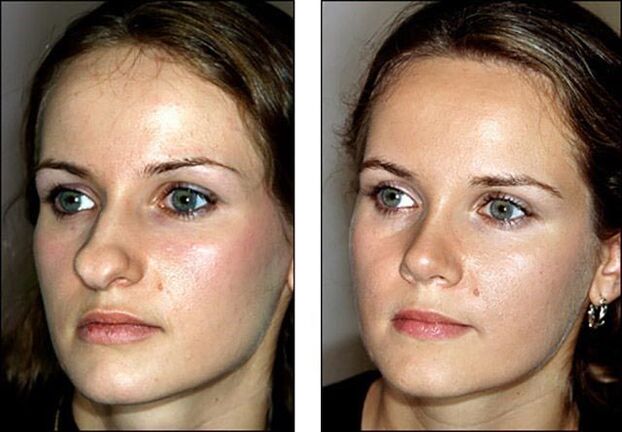
Indications and contraindications
Indications for rhinoplasty are associated with such shape imperfections:
- Gorbinka.
- The bent ends are sharp or thick.
- Long length.
- Wide nostrils.
- Saddle shape.
Rhinoplasty is indicated for deviated nasal septum, deformities - both congenital and as a result of trauma. The operation is performed with violation and complete cessation of nasal breathing.
The surgeon will refuse to make a correction if the client:
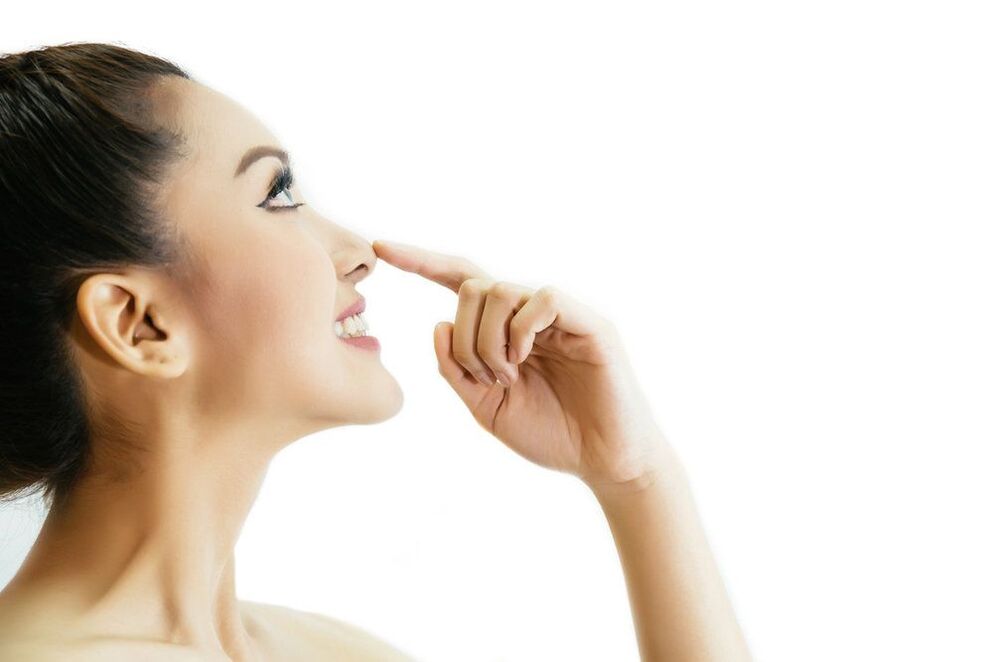
- Heart and blood vessel disease,
- Blood clotting disorders;
- Diseases of the liver, kidneys;
- diabetes;
- Active forms of tuberculosis;
- pregnancy, menstruation;
- Folliculitis (inflammation of the hair follicles), acne at the site of the next surgical intervention;
- Acute viral infections;
- Cancer;
- Disorders of the mental sphere.
There are also age restrictions.Rhinoplasty is not performed until the age of 18 in females and up to 21-23 years in males, which is associated with the process of formation of the facial part of the skull.
Correction is not recommended even after the age of 40, due to the slowdown in tissue regeneration and the risk of complications at this age. Older patients have a hard time getting used to a new look and often regret the change.
At a pre -procedure consultation, the surgeon finds out why the patient is interested in rhinoplasty, the outcome he or she expects, explains the consequences and warns of possible complications.
Exercise
Nasal correction occurs after preparation. The surgeon will instruct you on how to prepare for rhinoplasty.
Preparation for rhinoplasty involves standardized examinations:
- Electrocardiogram.
- Chest X-ray or fluorography.
- Picture the nose.
2 weeks before the next procedure, minus the blood thinning. For 7 days before rhinoplasty, it is recommended to refrain from drinking alcohol and smoking. For a day, snacks were left in the diet, and for 6 hours they refused food and water.
Prior to surgery, a consultation with an anesthesiologist is held. Experts explain information about anesthesia tolerance.
Analysis list
Such analysis is taken before rhinoplasty:
- Blood (general, biochemistry, electrolytes, coagulogram, blood type, Rh, factors) - for 14 days.
- HIV, HBS, HCV, RW - for 3 months.
- Urine - for 14 days.
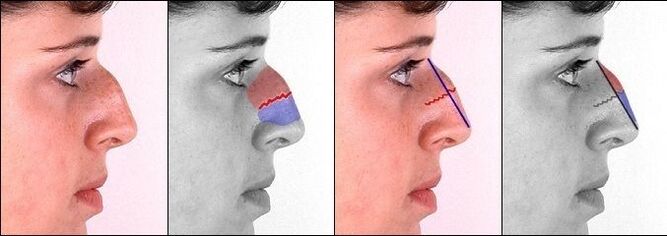
Does it hurt?
During the rhinoplasty itself, the patient does not feel anything, because he is in a state of sleep due to drugs or the doctor is using analgesics.
During the recovery period, there is more inconvenience than pain - for example, caused by tampons in the nose, which are removed after a day, and swelling. Compared to breast surgery, rhinoplasty is said to be painless.
Recovery
If an osteotomy (artificial fracture) is performed, then a plaster cast is used7–10 days. Edema that appears in the nose and around the eyes,disappears after 10-20 days.
Doctors can evaluate the initial results after 6 months, and finally after a year. How long tissue healing will last depends on body characteristics, age.
After removing the plaster, the patient is obliged to visit the doctor within the prescribed time. For a while, they refused to wear glasses, excluded spicy and hot foods from the diet to prevent bleeding, and limited physical activity.
The full recovery course lasts 6-12 months.
How long the face heals depends on the severity of the operation and complications.With a good course, after 10 days, the person gradually returns to the normal rhythm of life., go to work.
Why is rhinoplasty dangerous?
This is a surgical intervention, which is associated with risk, sometimes there are side effects. This is a good reason not to do rhinoplasty, especially if the surgeon does not see any abnormalities and medical signs.
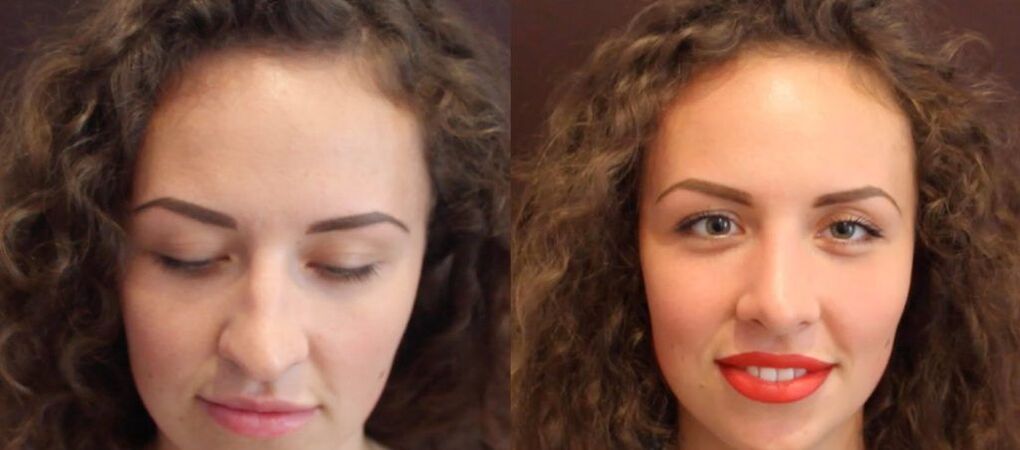
An anaphylactic reaction to anesthesia is possible - a life -threatening rapid allergic phenomenon. In 0. 017% of cases, toxic shock syndrome is observed - a state of shock, which leads to significant activity of bacterial or viral exotoxins.
In general, adverse events occur only in 4–18. 8% of patients, with one in ten of this group experienced skin and soft tissue complications.
During surgery, excessive bleeding, rupture of the skin, muco-cartilaginous structures, burns, violations of the bone pyramid, etc. are repaired.
In the first hour, the day after surgery, anaphylaxis, visual and respiratory disturbances may occur. Of the hidden complications - bleeding, hematoma of the septum.
Rarelyinfection enters the wound, which requires a course of antibiotic treatment; in case of sepsis (blood poisoning), hormones and blood transfusions are used.
Other complications include:
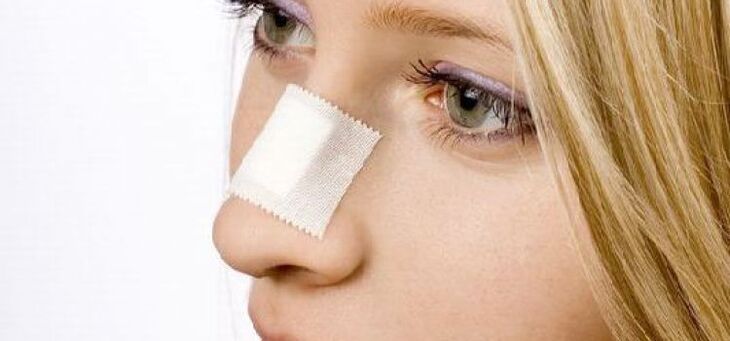
- Decreased sensitivity.
- Scars, scars that require repeated intervention.
- Hard to breath.
- Odor deterioration.
- Perforation (hole) of the nasal septum.
- Atrophy prone.
- Appearance of vascular tissue, pigmentation.
- Rarely - necrosis (death) of tissue.
In addition, patients are not always satisfied with the results -such patients 3 out of 10. The probability of the view going as planned is about 70%. The nose may look too right, look unnatural, and not be combined with other facial features. Therefore, before deciding to change, you should weigh the pros and cons.
After this, a second correction may be required, which is carried out after 6 months, but not earlier. The pointer is not sewn properly or the cartilage is removed excessively, where the nose appears short, small columella (the bottom between the nasal passages), etc.
When is the best time to cancel surgery?
Often, people with dysmorphophobia or dysmorphomania seek the help of a plastic surgeon. In the first case, we are talking about a painful attitude towards a small defect or feature of the body, in the second - about an imaginary external defect.
If the surgeon does not find deviations from the average parameters in the size of the nose, its location in relation to other parts of the face, consultation of a psychologist is recommended.
You should also review reviews about specific clinics and specialists. The lower the qualification of the doctor, the higher the likelihood of complications.




















